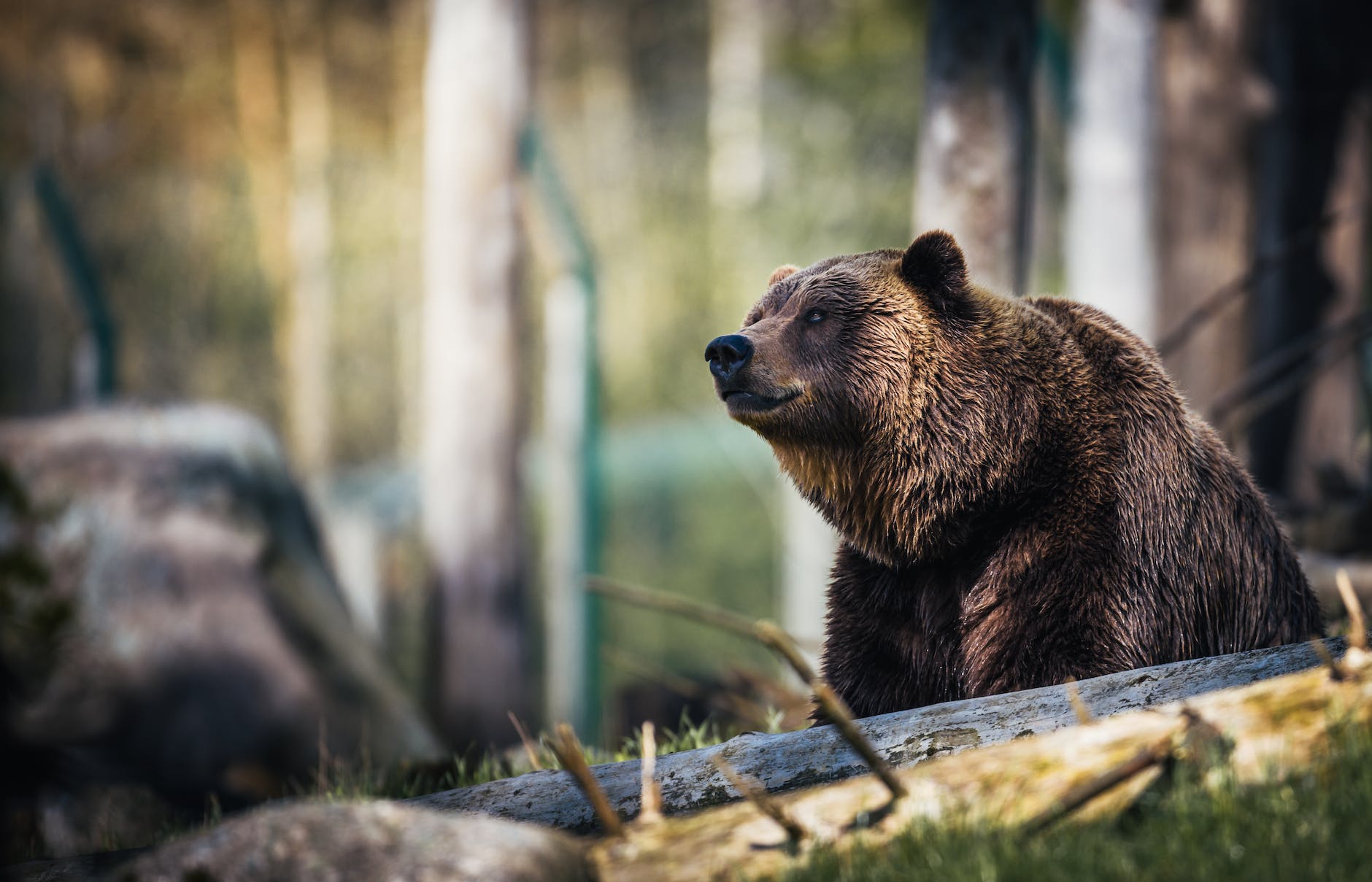
Are you an adventure enthusiast who loves exploring the great outdoors? Whether you enjoy hiking, camping, or simply going for long walks in nature, it’s important to be prepared for potential animal encounters. While these encounters can be exhilarating and provide a unique connection with wildlife, they can also be dangerous if not handled properly.
In this article, we will discuss some essential tips and strategies to help you stay safe when encountering animals in the wild. From understanding animal behavior to knowing how to react in different situations, we’ve got you covered. So, let’s dive right in!
Understanding Animal Behavior
The key to surviving animal encounters lies in understanding the behavior and characteristics of the animals you may encounter. By recognizing their patterns, you can better predict their actions and react accordingly. Here are some important points to consider:
- Research and Educate Yourself: Before embarking on any outdoor adventure, take the time to research the specific animals that inhabit the area you plan to visit. Familiarize yourself with their habitats, feeding habits, mating seasons, and any potential threats they may pose to humans. This knowledge will help you be better prepared and make informed decisions while in the wild.
- Maintain Distance: While some animals may appear harmless, it is crucial to maintain a safe distance at all times. Respect their personal space and avoid getting too close. Keep in mind that even seemingly docile animals can become territorial or feel threatened if approached too closely. As a general rule, stay at least 100 feet away from larger animals, such as bears or moose, and around 25-30 feet away from smaller animals, like coyotes or raccoons.
- Observe and Listen: Take the time to observe and listen to your surroundings. Animals often give warning signs before they become aggressive. Watch for any signs of agitation, such as raised hackles, growling, or hissing. Additionally, pay attention to any vocalizations or calls that may indicate the presence of nearby animals. By being aware of your surroundings, you can detect potential threats and take appropriate action.
- Avoid Surprising Animals: Startling an animal can trigger a defensive response, increasing the risk of an attack. To avoid surprising animals, make noise as you move through their habitats. Clap your hands, talk or sing aloud, or wear bells to alert animals of your presence. This will give them time to identify you as a non-threatening entity and retreat if necessary.
- Travel in Groups: When venturing into the wild, it is advisable to travel in groups rather than alone. Animals are more likely to avoid confrontations with larger numbers of humans. Additionally, having others around can provide support and assistance in case of an emergency.
By understanding animal behavior and following these guidelines, you can greatly reduce the risk of negative animal encounters. In the next part of this series, we will discuss specific strategies for dealing with encounters involving different types of animals.
Protecting Yourself from Predators
When venturing into the wild, it is crucial to be aware of the potential encounters with predatory animals. Predators such as bears, wolves, and big cats can pose a serious threat to human safety. In this section, we will discuss some essential tips to protect yourself from these predators and ensure your safety in the wild.
Stay Informed and Educated
Knowledge is power when it comes to surviving any animal encounter. Before embarking on your outdoor adventure, take the time to research the local wildlife in the area you plan to visit. Understand the behavior, habitats, and feeding patterns of predators that inhabit the region. This information will help you to be better prepared and make informed decisions while in the wild.
Make Noise
Predators are less likely to approach if they are aware of your presence. Making noise as you hike or move through the wilderness is an effective way to alert animals of your presence and avoid surprising them. Clap your hands, talk loudly, or carry a bear bell to produce a steady sound. This will give predators time to detect your presence and give them an opportunity to avoid you.
Travel in Groups
When exploring the wilderness, it is safer to travel in a group rather than going alone. Predators are more likely to target individuals who are alone, as they are perceived as easier targets. By traveling in a group, you not only increase your safety but also create a stronger presence, which can deter potential predators from approaching.
Avoid Attracting Predators
Predators are often attracted to the scent of food, so it is essential to store your food properly. Keep your food in secure containers or hang it from a tree branch to prevent animals from accessing it. Additionally, avoid cooking or eating near your sleeping area, as the smell of food can linger and attract predators to your campsite.
Carry Bear Spray
Bear spray is a powerful deterrent that can help protect you in case of a bear encounter. This specialized pepper spray is designed to temporarily disable bears and give you an opportunity to safely retreat. Be sure to familiarize yourself with how to use bear spray effectively before your trip and keep it readily accessible, such as on your belt or in a side pocket of your backpack.
Recognize Warning Signs
Learning to recognize warning signs of predators can help you avoid dangerous situations. Keep an eye out for tracks, scat, or other signs of recent animal activity. If you come across fresh tracks or scat, it is best to change your route or leave the area altogether. Additionally, be aware of your surroundings and listen for any unusual sounds, as these may indicate the presence of a predator.
Do Not Run
If you encounter a predator, the most crucial rule is not to run. Running can trigger a predator’s instinct to chase and attack. Instead, stay calm, stand your ground, and make yourself appear larger by raising your arms or opening your jacket. Maintain eye contact with the animal, but do not stare aggressively. Slowly back away while facing the predator until you are at a safe distance, and then slowly and calmly leave the area.
By following these tips, you can minimize the risks associated with encounters with predatory animals. However, it is important to remember that wildlife is unpredictable, and there are no foolproof methods to guarantee your safety in the wild. Always exercise caution, respect the animals’ habitat, and be prepared for any situation that may arise.
In the next section, we will delve into strategies for handling encounters with venomous creatures, such as snakes and spiders.
Tips for Surviving Animal Encounters
Now that we understand the importance of staying safe in the wild, let’s dive into some practical tips for surviving animal encounters. By following these guidelines, you can minimize the risk of potential harm and ensure a positive coexistence with wildlife.
1. Educate Yourself
One of the key aspects of staying safe in the wild is to educate yourself about the animals you may encounter. Research the local wildlife, their behavior, and their habitats. This knowledge will help you understand their patterns, allowing you to avoid potential encounters or act appropriately when faced with one. Additionally, learn to identify signs of aggression or distress in animals, such as growling, hissing, or flaring of ears, as this can be a signal to keep your distance.
2. Maintain a Safe Distance
Maintaining a safe distance from wildlife is crucial for your safety as well as the well-being of the animals. Different animals have different comfort zones, so it’s important to know the appropriate distance to keep. If you spot an animal in the wild, resist the urge to approach it or try to get closer for a better look. Use binoculars or a zoom lens on your camera instead. Remember, getting too close can provoke a defensive response from the animal and put you in harm’s way.
3. Store Food Properly
When venturing into the wild, it’s essential to store your food properly to avoid attracting animals. Keep your food in airtight containers and store them in secure locations, such as bear-proof containers or suspended from a tree branch. Proper food storage not only prevents animals from getting into your supplies but also helps maintain their natural foraging habits and reduces the likelihood of conflicts between humans and wildlife.
4. Make Noise
In certain situations, surprising an animal can lead to an aggressive reaction. To avoid this, make noise as you move through the wilderness. Clap your hands, talk loudly, or use bear bells to alert animals of your presence. This will give them time to move away, reducing the chances of an unexpected encounter. Making noise is especially important in areas known for their dense vegetation, where visibility may be limited.
5. Respect Wildlife’s Space
Respecting the space and boundaries of wildlife is crucial for their well-being and your safety. Avoid encroaching on their territory, nesting areas, or mating grounds. If you come across a baby animal, do not attempt to touch or rescue it, as the parent may become defensive. Instead, observe from a distance and allow nature to take its course. Remember, wild animals are just that – wild. It’s our responsibility to ensure their natural behaviors and habitats remain undisturbed.
Conclusion
Surviving animal encounters in the wild requires a combination of knowledge, respect, and caution. By educating yourself about local wildlife, maintaining a safe distance, properly storing food, making noise, and respecting their space, you can minimize the risk of dangerous encounters and enjoy the beauty of nature without jeopardizing your safety. Remember, our goal is not to dominate or control wildlife but to coexist harmoniously with the incredible creatures that share our planet. So, the next time you venture into the wild, be prepared, be respectful, and above all, stay safe.

Recent Comments